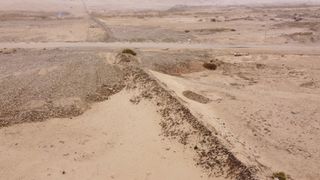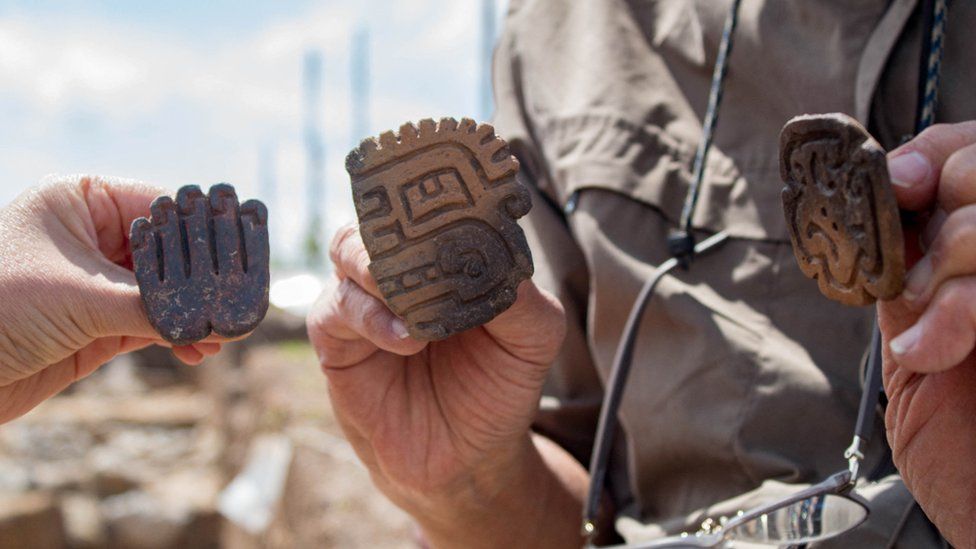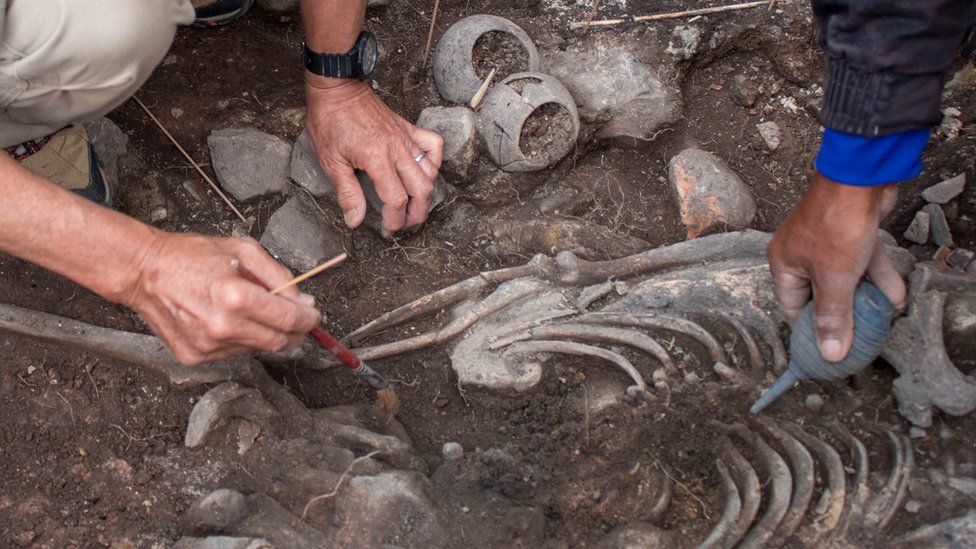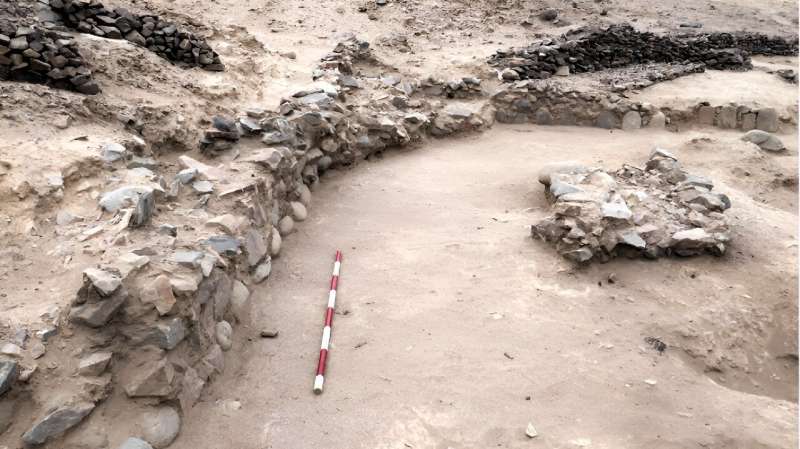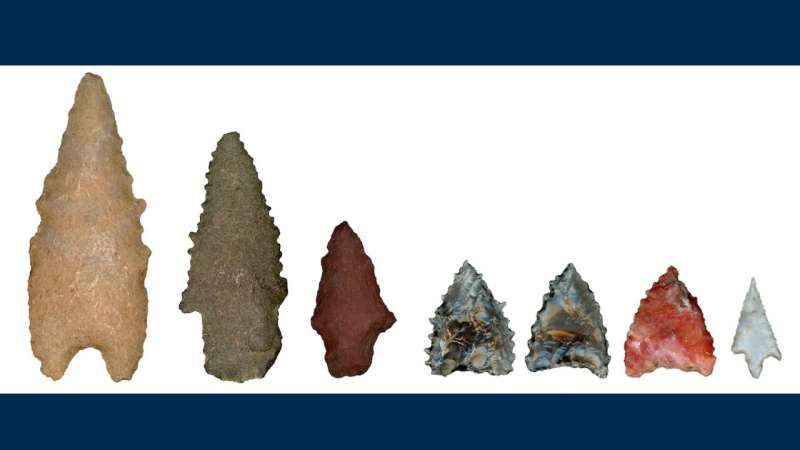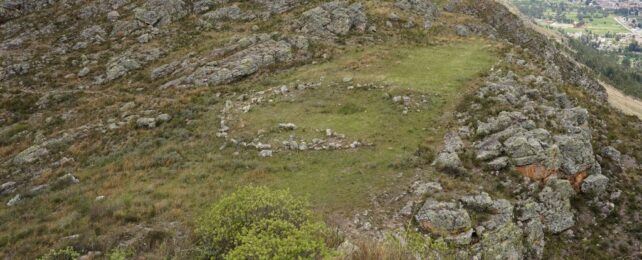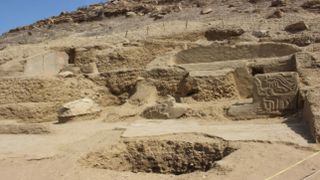ramonmercado
CyberPunk
- Joined
- Aug 19, 2003
- Messages
- 58,830
- Location
- Eblana
Another mass killing of children,
Archaeologists in Peru have unearthed what is believed to be the largest single mass child sacrifice in history.
The bodies of 227 victims, aged between five and 14, were found near the coastal town of Huanchaco, north of Peru's capital Lima. The children were believed to have been sacrificed over 500 years ago. The discovery comes barely a year after 200 child victims of human sacrifice were found at two other sites in the country.
Archaeologists told AFP news agency that some of the bodies in this latest collection still had hair and skin when they were dug up. The children show signs of being killed during wet weather, and were buried facing the sea, meaning they were probably sacrificed to appease the Chimú's gods. It is unclear in which year the incident took place.
https://www.bbc.com/news/world-latin-america-49495167
More Chimú discoveries.
Archaeologists in Peru have uncovered the remains of 25 people in the ancient city of Chan Chan.
The skeletons were found in a small space measuring 10 sq m in what was once the capital of the Chimú empire. The Chimú ruled parts of present-day Peru. Their empire reached its height in the 15th Century before their defeat by the Incas. Chan Chan, where the mass grave was found, was the largest mud citadel in pre-Columbian America.
Experts think that the mass grave may have been a burial place where members of the Chimú elite were laid to rest.
Archaeologist Sinthya Cueva told Reuters news agency said that most of the remains belonged to young women. "None of them are over 30 years old."
While it is known that the Chimú carried out human sacrifices, including of children, archaeologist Jorge Meneses Bartra said that there was no evidence those in the newly discovered grave died that way. ...
https://www.bbc.com/news/world-latin-america-59249540


:focal(800x602:801x603)/https://tf-cmsv2-smithsonianmag-media.s3.amazonaws.com/filer_public/87/80/878068a6-2f83-45de-ab89-37b385271bb0/figure-3_final_web.jpg)
/https://tf-cmsv2-smithsonianmag-media.s3.amazonaws.com/filer_public/e1/0d/e10d37cb-77b0-49e7-a7c5-8d2eb6693dfe/figure_10a_web.jpg)


